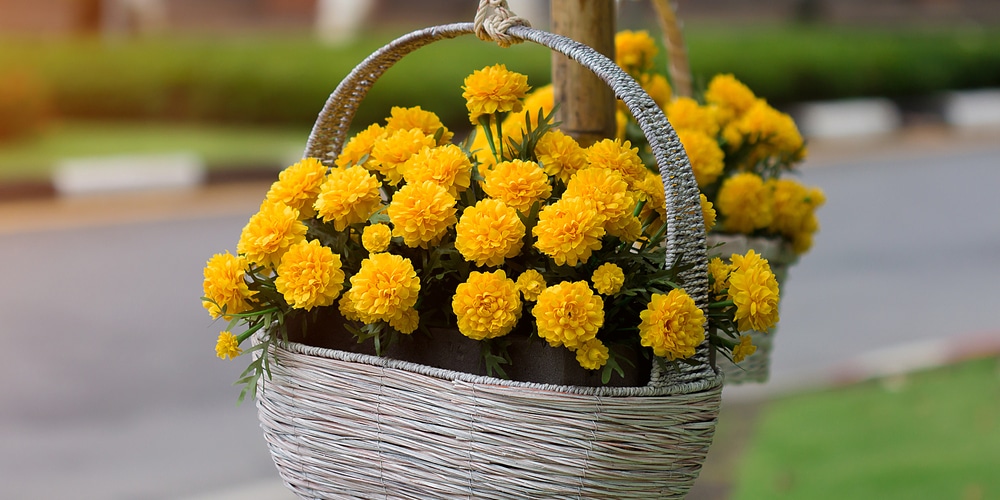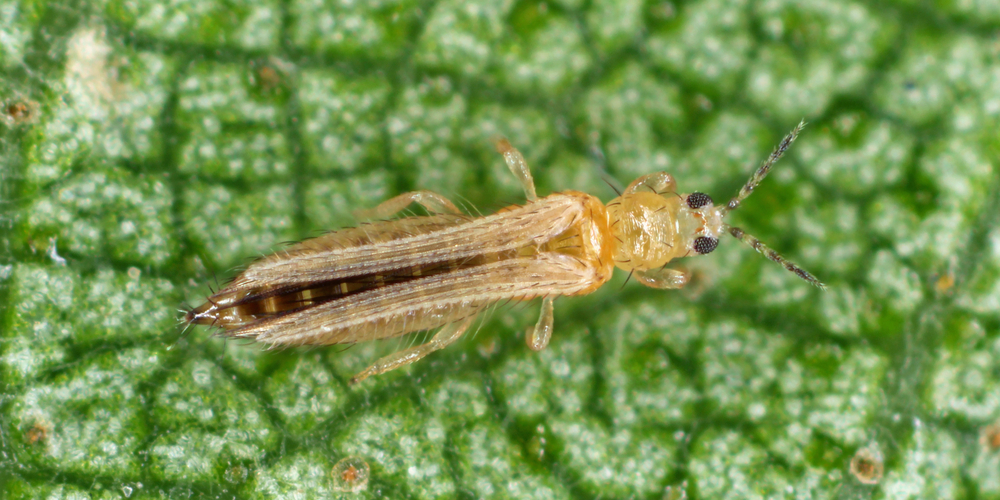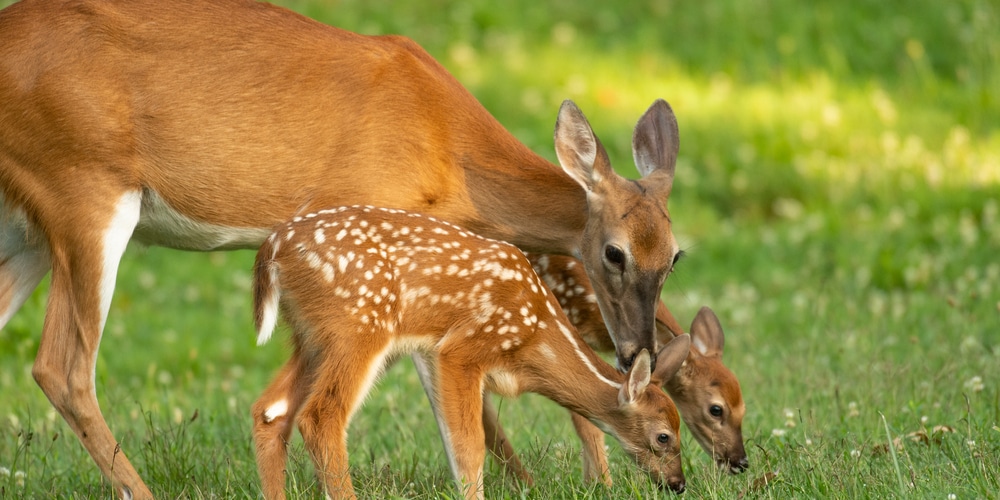What is eating my marigold leaves? Spider mites and grasshoppers are, by far, the most common pests that eat marigold leaves. But slugs are common threats, too. Most gastropods will eat this plant’s leaves, leaving only holes and slime trails behind them.
Insects that Like to Eat Marigolds

- Earwigs. Like aphids, these insects may occasionally eat your marigold leaves. Mainly, they cause ragged holes or edges. Leaf damage is similar to caterpillar damage, and sometimes, both problems coexist. But earwigs only damage plants’ leaves at night. So, if you are wondering if they are causing the issue, take a flashlight with you and inspect the marigold leaves at night.
- Grasshoppers. Under the right conditions, your grasshopper problem can become unmanageable. Locusts have an appetite for destruction that can rise to the level of a biblical plague. But you will be fine as long as they do not swarm in high numbers and take precautions.
- Leafminers. These insects usually target greenhouse marigolds. As the name implies, these insects live inside the leaves, causing squiggly lines to appear on the leaf surface. In detail, they are larvae of nocturnal insects that lay their eggs on the leaves. Their babies burrow inside and tunnel through the leaf. But as a result, the leaf deforms and slows the plant’s growth.
- Spider mites. They are those pesky red dots you see everywhere when the temperature rises above 55 F. Notably, they suck the life out of your marigolds and cause the plant to die by multiplying like crazy.
- Thrips. Like spider mites, they feed on the leaves and stems by sucking the juices. They can bring your household collection down to zero marigolds if left unattended. And the worst part is that you only need one thrip on your flower plant to cause a problem because this insect reproduces asexually.
How to Treat Marigolds For Insects
Insecticides
Insecticidal soap can work well to contain or stop early signs of an infestation. But you will have to carefully spray both sides of the leaves and the stems—every area of the plant, pretty much. You have to reach all the crevices and whatnot because thrips and spider mites hide very well. Besides, the eggs will not be affected. So, you will have to repeat this procedure at least every week for a month or two.
Contact pesticides containing malathion and carbaryl work well for controlling grasshoppers as long as you use them in spring. Springtime is the time of the year when grasshoppers do not have wings yet because they are nymphs. But if you let them mature, they will swarm around and lay eggs, causing next year’s problem.
Natural Remedies
If you suspect that your marigolds might have pests, isolate that plant in a separate room. The more away from any other flower plant, the better. You will also have to trim leaves infested by leafminers and thrips.
The best way to control most pests eating marigold leaves is by releasing lady beetles in your garden. After all, they feed on these insects. Plus, they help cut the use of pesticides, reducing the risk of soil pollution.
Animals that Like to Eat Marigolds
- Deer do not usually find marigolds appetizing, but they will graze on the younger seedlings. Usually, they feed on them during the night to avoid the smell of their flowers.
- Rabbits do not go for marigolds as their first choice. But they will munch on the younger leaves or eat all of them to survive.
- Slugs are an issue for many gardeners because they will stop at nothing. Slugs do not care that varieties like the African marigold contain phytochemicals with pesticidal activity. They love marigolds in all shapes and forms.
How to Stop Animals from Eating Marigolds
The best remedy to keep rabbits away from marigold seedlings is to set some chicken wire around them. Once the plant matures, rabbits will usually leave it alone. Or munch a couple of leaves, leaving no unrecoverable damage.
Metaldehyde is the most popular pesticide for slugs. But it can harm wildlife, pets, children, and the environment. So, use with caution. A safer solution is snail bait. But it takes more time to see results.
Hoop houses can help keep rabbits, deers, and other animals from accessing the marigold leaves. Plus, they can increase humidity, discouraging grasshoppers that may find tiny holes in the cover material.
Related Article: Pumpkin Companion Plants

